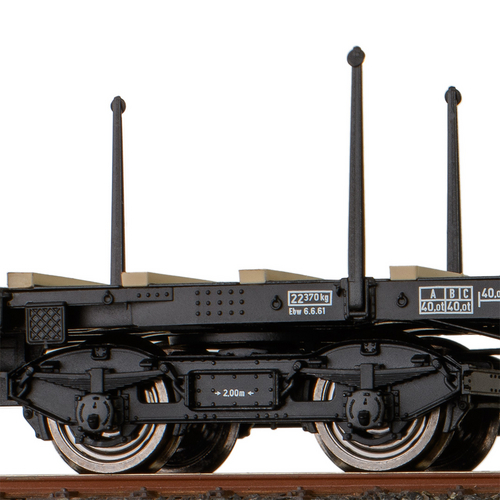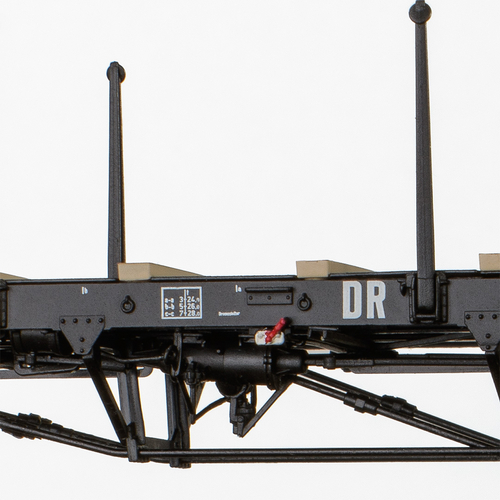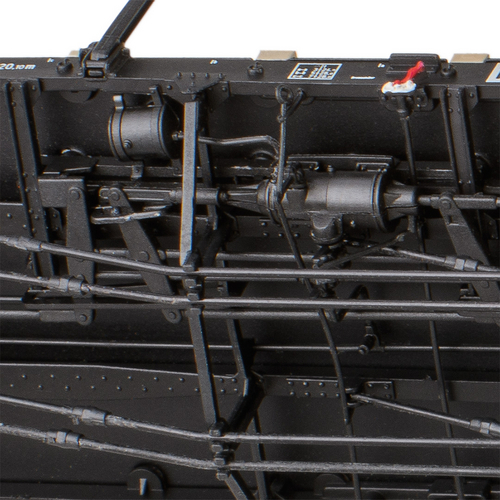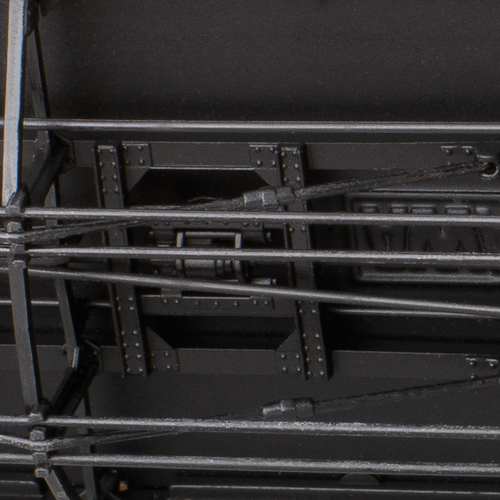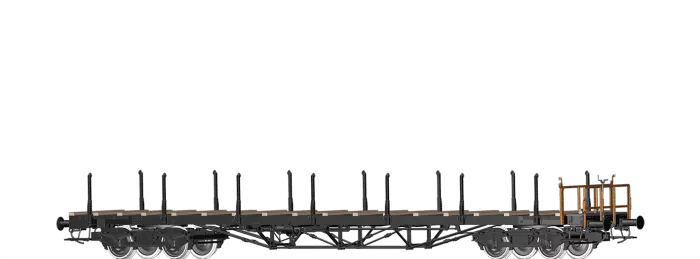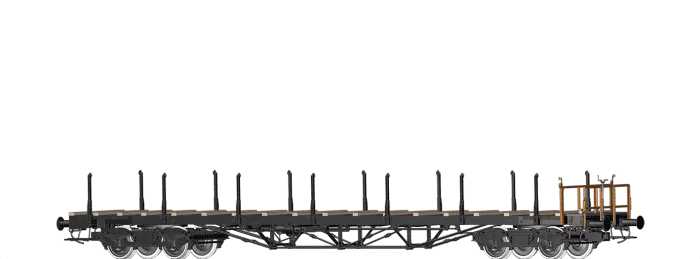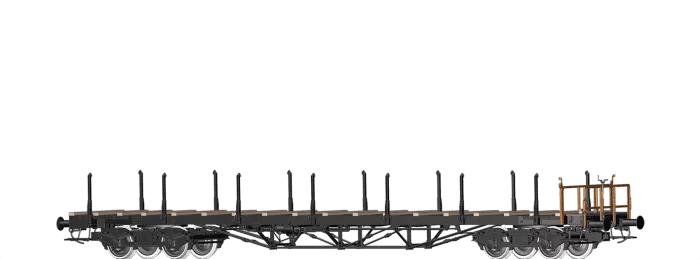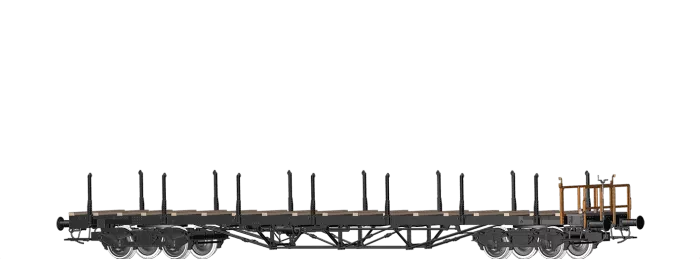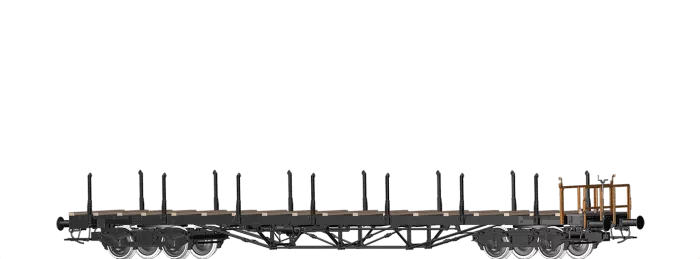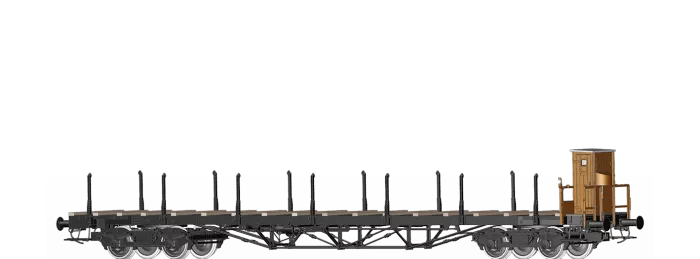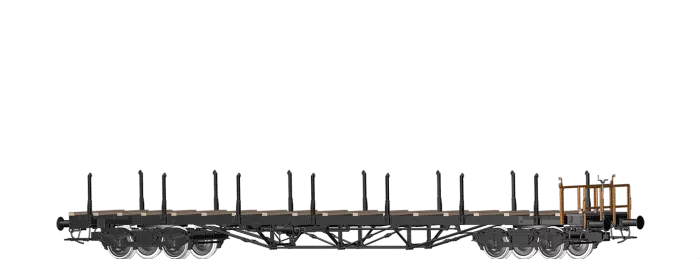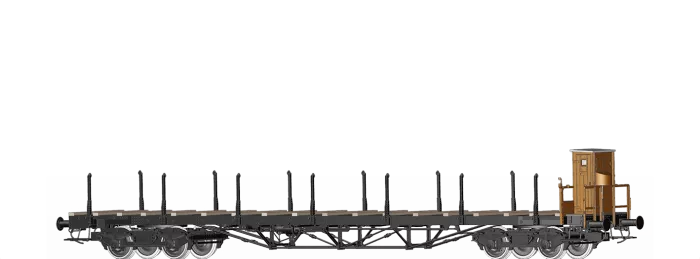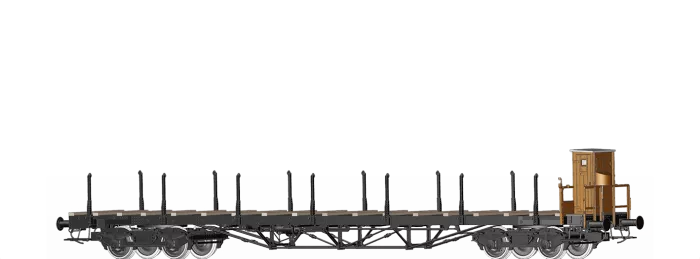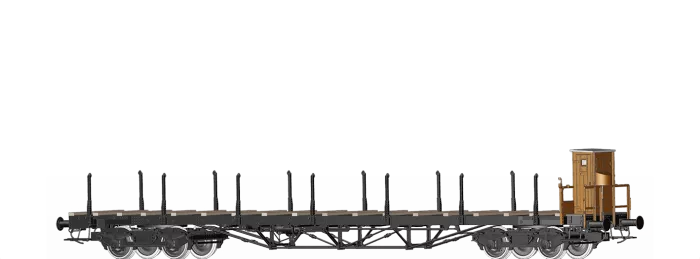
Heavy Duty Freight Car Rp668 DB
Road no.: 31 80 382 0 265-7
Model details
- Brake blocks in wheel plane
- NEM-standard short-coupling
- Die-cast zinc floor
- Insertable stakes, individually enclosed
- Delivery without load
- Extra mounted steps and handrails
- Metal wheels
- Finely detailed chassis
- Extra mounted axle brake rod
- Individually mounted toe bearing
Downloads
Info about the original
The railway has always been a means of transporting large and heavy loads. It was therefore a logical step for the K.E.P.V., after various predecessor designs, to devote itself to the development of rail carriages with larger payloads from around 1910. In accordance with the needs of the time, a rail carriage type was developed that was designed for a loading length of 18 m and a maximum load capacity of 35 t. In various construction lots between 1912 and 1928, the K.P.E.V. – and later the DRG – ordered a total of around 2,650 SSlm (Ce 168) rail carriages based on the Ce 168 master drawing. The filigree strut bracing and carriage floor made of perforated sheet metal were distinctive features of the rail carriages of this era. While most of these carriages were only equipped with handbrakes upon delivery, the units delivered to the DRB were factory fitted with Kunze-Knorr goods-train air brakes. These brakes were retrofitted to many carriages of older manufacture over the years. The vehicle fleet has fluctuated over the years. After the First World War, the total stock was decimated as a result of reparations to France and Belgium, as well as Poland. In the early 1950s, both German state railways still had a combined inventory of approximately 1,000 SSlm 16 / SSlu vehicles. Due to further decommissioning, the number of serviceable carriages fell steadily until the last wagons of this type were withdrawn from service in the 1970s.


